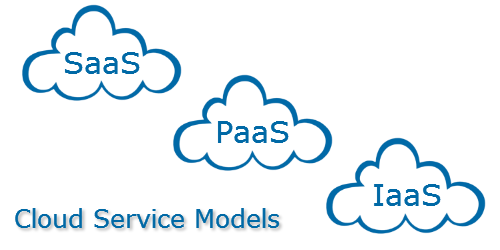Cloud Computing refers to the delivery of on-demand computing services over the internet on a pay-as-you-go basis. In simpler words rather than managing files and services on a local storage device, you will be doing the same over the internet in a cost-efficient manner.
When you have a small development company, you want to scale up and expand the business. However, unpredictable requirements and drawbacks on limited resources might be the problem. That’s when cloud computing comes in.
Before moving on to cloud computing, there needs to be a distinction between on-premise model and cloud computing model. On-premise software is locally installed and in terms of scalability, the cost is bigger and it has not much options, therefore often leads to loss when something new is introduced or changed. These systems also need a lot of space for their servers despite the power and maintenance fuss that comes with them.
When in come to data security, they offer less system security because of a complicated combination of physical and traditional IT security measures. When a data loss occurs the chance for data recovery with on-premise setups are very small.
As for maintenance, it requires additional teams for hardware and software maintenance leading to considerable large costs.
On the other hand, cloud allows you to pay only in how much you use and with faster and easier scalability. Computer cloud solutions are offered by cloud service providers like: Azure, AWS, Google. The latter, provide and maintain the serves saving both money and space. Cloud has much better security and lets you avoid having to constantly monitor security protocols. When a data loss occurs, they have robust disaster recovery measurements in place to ensure faster and easier data recovery. Also, they are maintained by the cloud service providers reducing the costs and resource allocations substantially.
Types of Cloud Computing
Cloud computing has two types of models which are: deployment and service model.
When it comes to deployment models, they are of three kind: public, private and hybrid cloud.
Public Cloud
The infrastructure is available to the public over the internet and these are owned by cloud service providers. Public cloud providers are responsible for hardware and data centers and to provide high-performance and fast access to the application data.
Private Cloud
The infrastructure is exclusively operated by a single organization. This can be supervised by the organization or a third-party. It includes a lot of benefits such as: scalability, easy service delivery, security and access control. To meet a company’s requirements regarding their sensitive data, protocols or other concurrences then private cloud is a good fit.
Hybrid Cloud
As its name conveys, this is a combination of both the public and private cloud functionalities. This arrangement gives more flexibility and when a set of events happens then the organization can proceed with data exchange between the two clouds.
Cloud Service Models
 Cloud Models
Cloud Models
Then, let’s have a look at the cloud service models: IaaS, SaaS, and PaaS. When it comes to on-premise models, you’ll need to manage and maintain every component including applications data, virtualization and middleware. On the contrary, cloud computing models are flexible.
IaaS (Infrastructure as a Service)
IaaS refers to infrastructure as a service. It emerged in the 2010 and at that time it was very popular. Now SaaS and PaaS are being used at a much higher rate. IaaS is a cloud service model where users get access to basic computing infrastructure and are commonly used by IT administrators. If an organization requires storage or virtual machines, IaaS is a good choice, because it only needs to manage the data, runtime, middleware apps and the operating system. The rest is handled by the cloud providers.
PaaS (Platform as a Service)
Next, it is PaaS otherwise Platform as a Service, which provides cloud platforms and runtime environments for developing, testing and managing apps. This service model enables users to deploy apps without the need to acquire, maintain or manage the related architecture. When creating software applications, PaaS is the model of choice. PaaS only requires to handle the application data and components like runtime, middleware, OS, servers, storage and others are handled by the cloud service providers.
SaaS (Software as a Service)
Finally, there is SaaS. It involves cloud services for hosting and managing your software applications. Software and hardware requirements are administered by the vendors, so you don’t have to manage any of those aspects of the solution. If you don’t want to worry about the workload of owning any IT equipment, the SaaS model would be the one to go. With SaaS, the cloud service provider handles all components of the solution required by the organization.
Some of the popular cloud computing services in the market are: AWS(Amazon Web Services), Microsoft Azure and Google Cloud Platform.